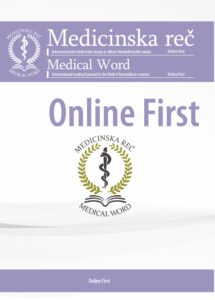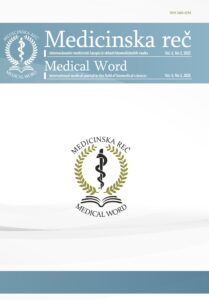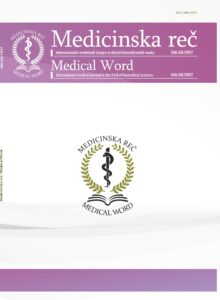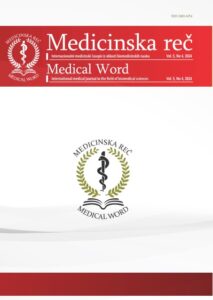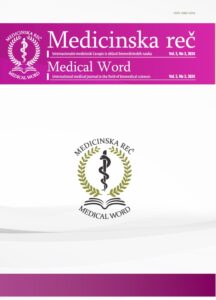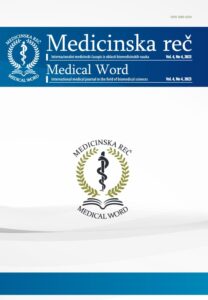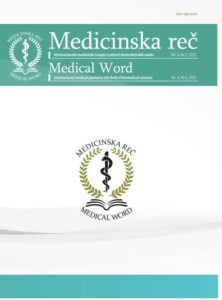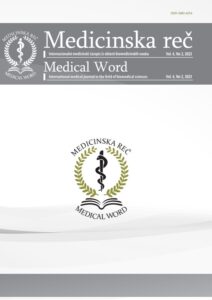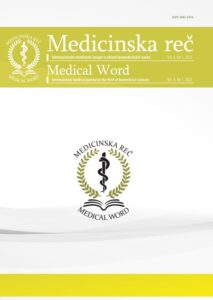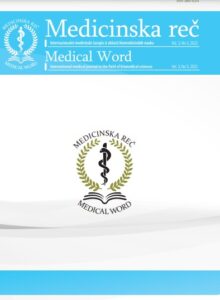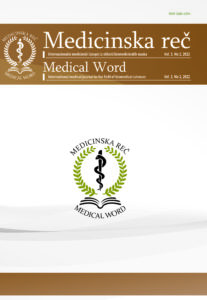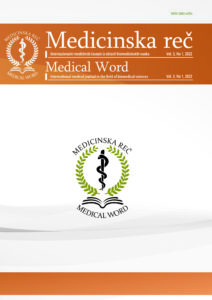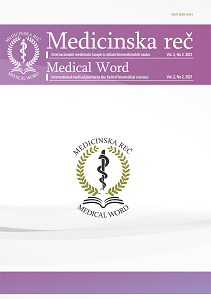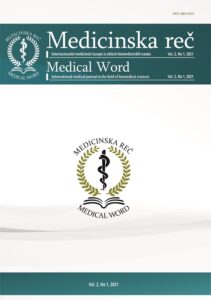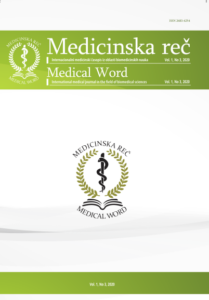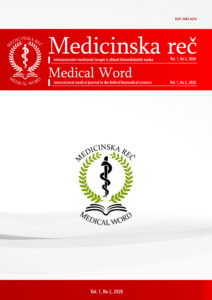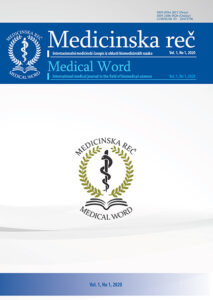Percutaneous coronary interventions in patient with hemophilia A, partial gastrectomy and reccurent myocardial infarction
Miodrag Vučić, Nebojša Vacić
Med Word 2020; 1(1): 15–18
DOI: https://doi.org/10.5937/medrec2001015V
Abstract
Acute coronary syndrome is not rare in patients with haemophilia. We report a case of 55-year-old male patient with haemophilia A and gastric resection with Billroth II anastomosis with repeated STEMI and NSTEMI who was successfully treated by PTCA with stent implantation. Patient was admitted to the emergency department (April 2010). Coronary angiography revealed occlusion of mid-RCA, suboclusion of proximal LAD and also of medial Diagonal (Dg) brunch. Bare metal stent was implanted into the RCA. Two-years after (March 2012) patient was readmitted due to chest pain. Coronary angiography showed occluded posterior descendent artery from right coronary artery, subocluded proximal and medial LAD and first Diagonal brunch. Two Carbostents were implanted. There are no reports on the use of drug-eluting stent implantation in patients with hemophilia; however, with concerns about bleeding diathesis, bare-metal stents are regarded as safe. Our choice was new stent type, allowing more rapid reendothelialization, and minimizing the risk of stent thrombosis in the situation when the discontinuation of dual antiplatelet therapy. Antiplatelet therapy is important for preventing thrombus formation in the implanted stent even in patients with abnormal coagulation and high bleeding risk. New rapid-reendothelization stents may be the better choice in this group of patients.
Key words: haemophilia, myocardial infarction, stent, antiplatelet therapy
References
- Plug I, van der Bom JG, Peters M, et al. Mortality and causes of death in patients with hemophilia, 1992-2001: a prospective cohort study. J Thromb Haemost 2006; 4: 510–6.
- Srámek A, Reiber JH, Gerrits WB, Rosendaal FR. Decreased coagulability has no clinically relevant effect on atherogenesis: observations in individuals with a hereditary bleeding tendency. Circulation 2001; 104: 762–7.
- Girolami A, Ruzzon E, Fabris F, Varvarikis C, Sartori R, Girolami B. Myocardial infarction and other arterial occlusions in hemophilia a patients. a cardiological evaluation of all 42 cases reported in the literature. Acta Haematol 2006; 116: 120–5.
- Bond L, Bevan D. Myocardial infarction in a patient with hemophilia treated with DDAVP. N Engl J Med 1988; 318: 121.
- Arora U, Dhir M, Cintron G, Strom JA. Successful multi-vessel percutaneous coronary intervention with bivalirudin in a patient with severe hemophilia A: a case report and review of literature. J Invasive Cardiol 2004; 16: 330–2.
- Krolick MA. Successful percutaneous coronary intervention in a patient with severe haemophilia A using bivalirudin as the sole procedural anticoagulant. Haemophilia 2005; 11: 415–7.
- Park DW, Park SW. Stent thrombosis in the era of the drug-eluting stent. Korean Circ J 2005; 35: 791–4.
- MacKinlay N, Taper J, Renisson F, Rickard K. Cardiac surgery and catheterization in patients with haemophilia. Haemophilia 2000; 6: 84–8.


